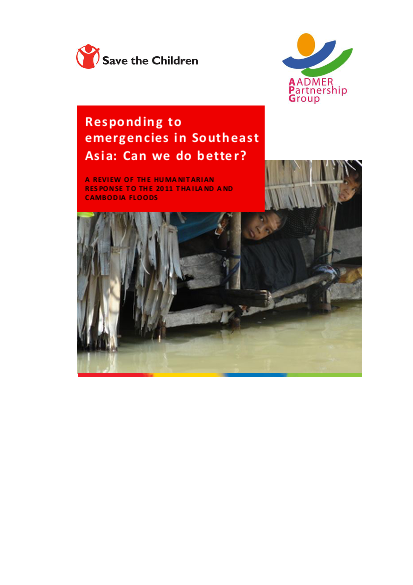
Between July and October 2011, a succession of cyclones, tropical storms and intense monsoonal rains across Southeast Asia resulted in the worst flooding in the region in more than a decade. In Thailand, more than 14m people in 65 provinces were affected; in Cambodia, more than a million people in 18 provinces. By the time the flood waters began to recede, more than 20m people across the region, including 10m children, had been affected. In both Thailand and Cambodia, as throughout the region, the capacity of national governments to respond to disasters has increased in recent years. Both countries have national disaster management organisations and, to varying degrees, legislative/regulatory and policy frameworks for disaster management. But in the 2011 floods response, adherence to these frameworks proved challenging. In Thailand, an ad hoc body was established to oversee the management of flood relief operations, leaving the Department of Disaster Preparedness and Mitigation (DDPM) with a supporting role. In Cambodia, the National Committee for Disaster Management (NCDM) declined to assume the leadership role that it had in the past vis-à-vis international actors, citing lack of resources and in some cases referencing the absence of a formal government appeal for international assistance.
